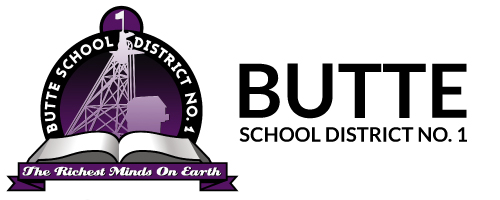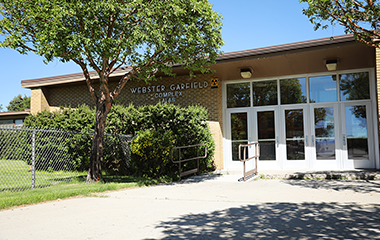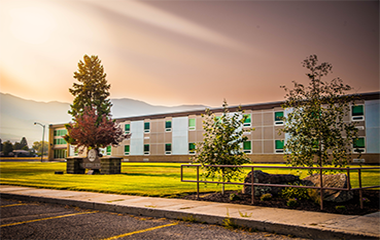Butte School District
THE BOARD OF TRUSTEES
3417
Communicable Diseases
Note: For purposes of this policy, the term “communicable disease” refers to the diseases identified in 37.114.203, ARM, Reportable Diseases, with the exception of common colds and flu.
Although the District is required to provide educational services to all school-age children who reside within its boundaries. Attendance at school may be denied to any child diagnosed as having a communicable disease which could make the child’s attendance harmful to the welfare of other students. In the instance of diseases causing suppressed immunity, attendance may be denied to a child with suppressed immunity in order to protect the welfare of the child with suppressed immunity when others in the school have an infectious disease which, although not normally life threatening, could be life threatening to the child with suppressed immunity.
The District shall provide soap and disposable towels or other hand-drying devices shall be available at all handwashing sinks. Common-use cloth towels are prohibited. Sanitary napkin disposal shall be provided for girls of age ten or older and in teachers' toilet rooms and nurses' toilet rooms. The District shall provide either sanitary napkin dispensers in the girls', nurses', and teachers' toilet rooms or some other readily available on-site access to sanitary napkins
The Board recognizes that communicable diseases which may afflict students range from common childhood diseases, acute and short-term in nature, to chronic, life-threatening diseases such as human immunodeficiency virus (HIV) infection. The District shall rely on the advice of the public health and medical communities in assessing the risk of transmission of various communicable diseases to determine how best to protect the health of both students and staff.
The District shall manage common communicable diseases in accordance with DPHHS guidelines and communicable diseases control rules. If a student develops symptoms of any reportable communicable or infectious illness as defined while at school, the responsible school officials shall do the following:
Students who express feelings of illness at school may be referred to a school nurse or other responsible person designated by the Board and may be sent home as soon as a parent or person designated on a student’s emergency medical authorization form has been notified. The District may temporarily exclude from onsite school attendance a student who exhibits symptoms of a communicable disease that is readily transmitted in a school setting. Offsite instruction will be provided during the period of absence in accordance with Policy 2050. The District reserves the right to require a statement from a student’s primary care provider authorizing a student’s return to onsite instruction.
When information is received by a staff member or a volunteer that a student is afflicted with a serious communicable disease, the staff member or volunteer shall promptly notify a school nurse or other responsible person designated by the Board to determine appropriate measures to be taken to protect student and staff health and safety. A school nurse or other responsible person designated by the Board, after consultation with and on advice of public health officials, shall determine which additional staff members, if any, have need to know of the affected student’s condition.
Only those persons with direct responsibility for the care of a student or for determining appropriate educational accommodation shall be informed of the specific nature of a condition, if it is determined that such individuals need to know this information.
The District may notify parents of other children attending a school that their children have been exposed to a communicable disease without identifying the particular student who has the disease.
Healthy Hand Hygiene Behavior
All students, staff, and others present in the any school building shall engage in hand hygiene at the following times, which include but are not limited to:
Hand hygiene includes but is not limited to washing hands with soap and water for at least 20 seconds. If hands are not visibly dirty, alcohol-based hand sanitizers with at least 60% alcohol can be used if soap and water are not readily available. Staff members shall supervise children when they use hand sanitizer and soap to prevent ingestion. Staff members shall place grade level appropriate posters describing handwashing steps near sinks.
Legal Reference:
Policy History:
Adopted on: 10/18/04
Revised on: 6/21/2021
- 3102 - Attendance Area Policy
- 3102P - Attendance Area Policy Continued
- 3102F-1 - Request for Student Boundary Waiver (opens in new window)
- 3102F-2 - Request for Student Records (opens in new window)
- 3102 F-3 Special Power of Attorney for temporary custody assignment
- 3102F-4 - Student Transfer Form (opens in new window)
- 3110 - Entrance, Placement & Transfer
- 3120 - Compulsory Attendance
- 3121 - Enrollment & Attendance Records
- 3121F - Education Authorization Affidavit (opens in new window)
- 3121P - Enrollment & Attendance Records Continued
- 3122 - Attendance Policy
- 3122P - Attendance Policy Continued
- 3125 - Education of Homeless Children
- 3125F - McKinney-Vento Homeless Education Assistance Dispute Resolution Form (opens in new window)
- 3130 - Students of Legal Age
- FP-14.1 Out of District Attendance Agreement (opens in new window)
- 3141 - Discretionary Nonresident Student Attendance Policy
- 3141 F-1 Application for Out of District Attendance (opens in new window)
- 3141 F-2 FP-14.1 Parent or District Student Attendance Agreement FY2026 (opens in new window)
- 3141 F-3 - FP-14.2 Foster and Group Home Student Attendance Agreement FY2026 (opens in new window)
- 3141P - Nonresident Student Enrollment
- 3145 - Foreign Exchange Students
- 3150 - Part-Time Attendance
- 3200 - Student Rights & Responsibilities
- 3210 - Equal Education, Nondiscrimination & Sex Equity
- 3215 - Uniform Grievance Procedure
- 3221 - Student Publications
- 3222- Distribution & Posting of Materials
- 3224 - Student Dress
- 3225 - Sexual Harassment/Intimidation of Students
- 3225F - Harassment Reporting Form for Students
- 3225P Procedure Sexual Harassment of Students
- 3226 - Hazing...
- 3231 - Searches & Seizures
- 3231P - Searches & Seizure Continued
- 3233 - Student Use of Buildings; Equal Access
- 3235 - Video Surveillance
- 3300 - Corrective Actions & Punishments
- 3300F - Notice of Hearing (opens in new window)
- 3300P - Corrective Actions & Punishments Continued
- 3310 - Student Discipline
- 3310P - Discipline of Students with Disabilities (opens in new window)
- 3330 - Use of Alcohol-Sensor Device
- 3403F - Student Participation Form
- 3403 - Extracurricular Participation
- 3405 - Missing School Children
- 3405P - Missing School Children Continued
- 3410 - Student Health/Physical Screenings/Examinations
- 3410FMedical Examination Notice Permission
- 3413 - Student Immunization
- 3413-F2 Religious Exemption
- 3415 - Management of Sports-Related Concussions
- 3416 - Administering Medicines to Students
- 3415P - Management of Sports-Related Concussions
- 3416F - Designation and Acceptance to Administer Glucagon
- 3416F-1 Standing Order-Administering Medicines to Students
- 3416F-2 Standing Order Log Sheet
- 3416F-A - Medication Administration Training Within the School
- 3416F-B - Administration of Liability Release & Medication Order
- 3416F-C - Daily Medication Log
- 3416F-D - Student Log for PRN - "As Needed" Medication Administration
- 3416F-E - Student Log for Emergency Medication Administration
- 3416F-G - Protocol for Emergency Use of Epinephrine for Anaphylaxis
- 3416F-H - Log for Administration of Stock Supply
- Addendum 3416F-I Stock Supply Naloxone
- 3417 - Communicable Diseases
- 3431 - Emergency Treatment
- 3440 - Removal of Student During School Day
- 3440P - Removal of Student During School Day Continued
- 3510 - School-Sponsored Student Activities
- 3510P - Requesting, Approving & Scheduling of Field Trips
- 3510F-1 - Application for Field Trip
- 3510F-2 - Parent Consent (opens in new window)
- 3510F-3 - Insurance
- 3520 - Student Fees, Fines & Charges
- 3520P - School Nutrition Services Procedures & Rules
- 3520F-1 School Nutrition Meal Agreement
- 3535 - Distribution of Fund Drive Literature Through Students
- 3530 - Student Fund-Raising Activities
- 3600 - Student Records
- 3600P - Student Records Continued
- 3600F-1 - Student Records Continued (opens in new window)
- 3600F-2 - Student Records Continued
- 3606 - Transfer of Student Records
- 3606F - Transfer of Student Records Continued
- 3608 - Receipt of Confidential Records
- 3610 - Programs for At Risk/Disadvantaged Students
- 3611 - Gangs & Gang Activity
- 3612 - District-Provided Access to Electronic Information, Services & Networks
- 3612F - Internet Access Conduct Agreement (opens in new window)
- 3612P - Acceptable Use of Electronic Networks
- 3630 - Cell Phones & Other Electronic Equipment
- 3615 - Crisis Intervention/Management
- 3650 - Pupil Online Personal Information Protection
- 3655 - Student Safety
This site provides information using PDF, visit this link to download the Adobe Acrobat Reader DC software.









